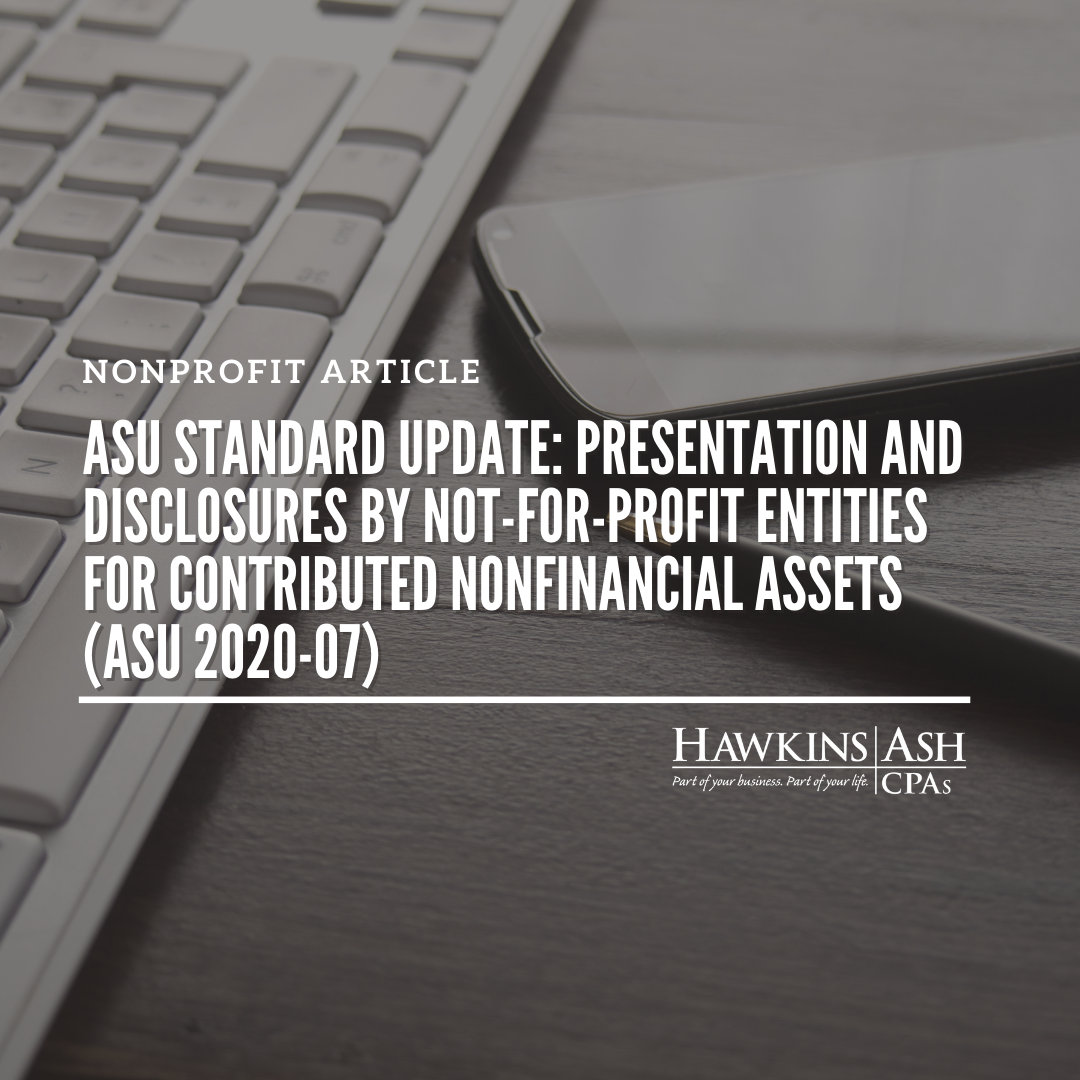In September of 2020, the FASB (Financial Accounting Standard Board) issued a new pronouncement regarding the presentation of contributed nonfinancial assets in the financial statements. This came about in response to users of not-for-profit financials requesting that more transparency was needed regarding the types of non-financial gifts that organizations receive, how these gifts were being valued and what was their intended use. Prior to the issuance of this standard, there was only guidance requiring footnote disclosure for contributed services.
Annually, many organizations receive a substantial portion of their total contributions in the form of donated goods and services. They rely on these gifts in order to accomplish their mission. Oftentimes, however, the reader of the financials is not aware that the organization is receiving them. Examples of in-kind donations are stocks, fixed assets, materials, supplies, clothing, and contributed services. These in-kind gifts are typically included in the contribution line of the statement of activities and are not called out for the reader.
The standard is effective for fiscal years beginning after June 15, 2021, and must be done retrospectively.
Upon implementation, not-for-profit organizations will be required to show in-kind contributions as a separate line, apart from cash contributions, on the statement of activities. There will also be additional footnote disclosure required for each category of in-kind gifts that includes the following:
-
- The amount of revenue recognized for that category
- Identification of any donor restrictions that exist on the in-kind gift
- Qualitative information about the not-for-profits policy about monetizing rather than using the in-kind gift
- Techniques used to estimate fair value of contributed non-financial assets in that category
- The principal market used to estimate fair value if it is a market in which the organization is prohibited by a donor restriction from selling or using the contributed nonfinancial assets.
This standard does not affect the amount or timing of the recognition of in-kind donations, only their presentation in the financial statements.
If you have any questions in regards to how the standard will impact your organization, please contact your Hawkins Ash CPAs representative.





